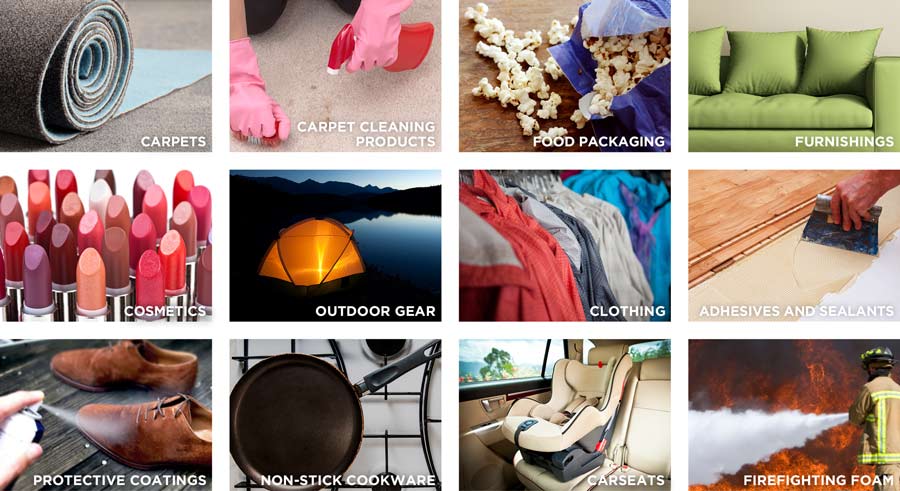Although sometimes convenient, PFAS are associated with serious health problems and they can remain in the environment forever.
What are they?
Per- and polyfluoroalkyl substances (PFAS), sometimes referred to as highly fluorinated chemicals or PFCs, are used in many consumer products and industrial applications because of their oil-, stain-, and water-repellent properties. Examples of chemicals in this class include PFOA, PFOS, and more than 10,000 related compounds.
Where are they found?
PFAS may be found in carpets, cleaners, clothing, cookware, cosmetics, electronics, food packaging, furnishings, outdoor apparel, paints, papers, protective coatings and sealants, and firefighting foams.

Due to concerns about their health harms, governments and companies have begun phasing out the use of in textiles, food packaging, cosmetics, and fire fighting foam. In 2020 the carpet industry voluntarily stopped using PFAS in most products.
What are the health concerns?
Well-studied PFAS have been linked to kidney and testicular cancer, elevated cholesterol, decreased fertility, thyroid problems, and liver disease as well as decreased immune response to vaccines in children.
How are we exposed?
Humans are exposed to PFAS through contaminated food, drinking water, air and dust. Products in our homes and workplaces that contain these chemicals contribute to our exposure. PFAS are found in the bodies of 99% of Americans.
What are the environmental concerns?
PFAS do not break down in the environment. Because of this extreme persistence, these chemicals are transported around the globe. They travel long distances and pollute even the most remote places.
“Safer” replacements?
Several so-called “long-chain” PFAS were phased out due to their potential for health harm. They have been replaced by numerous “short-chain” and other related chemicals that are equally persistent and may pose similar health risks. To prevent such “regrettable substitutions”, the entire class of PFAS—including fluoropolymers and fluorinated gases—should be avoided. For more on this problem, see our flyer “Fluorinated Alternatives: Myths versus Facts.”

